Ultra-Indie Spotlight: Enigma Engine And The Ex-Exposition

Enigma Engine is a cool first-person horror by indie studio Basalt Tower. In it, your objective is to simply find a way to restart the Enigma Engine, whatever that means. That’s kind of the beauty of it right now. The vagueness and mystery of it all. There is no expository dialogue or whatever. You turn on the Engine because they told you to. Of course, it’s just a demo right now, and this could all change. But I really think this is a title that has a lot of potential.
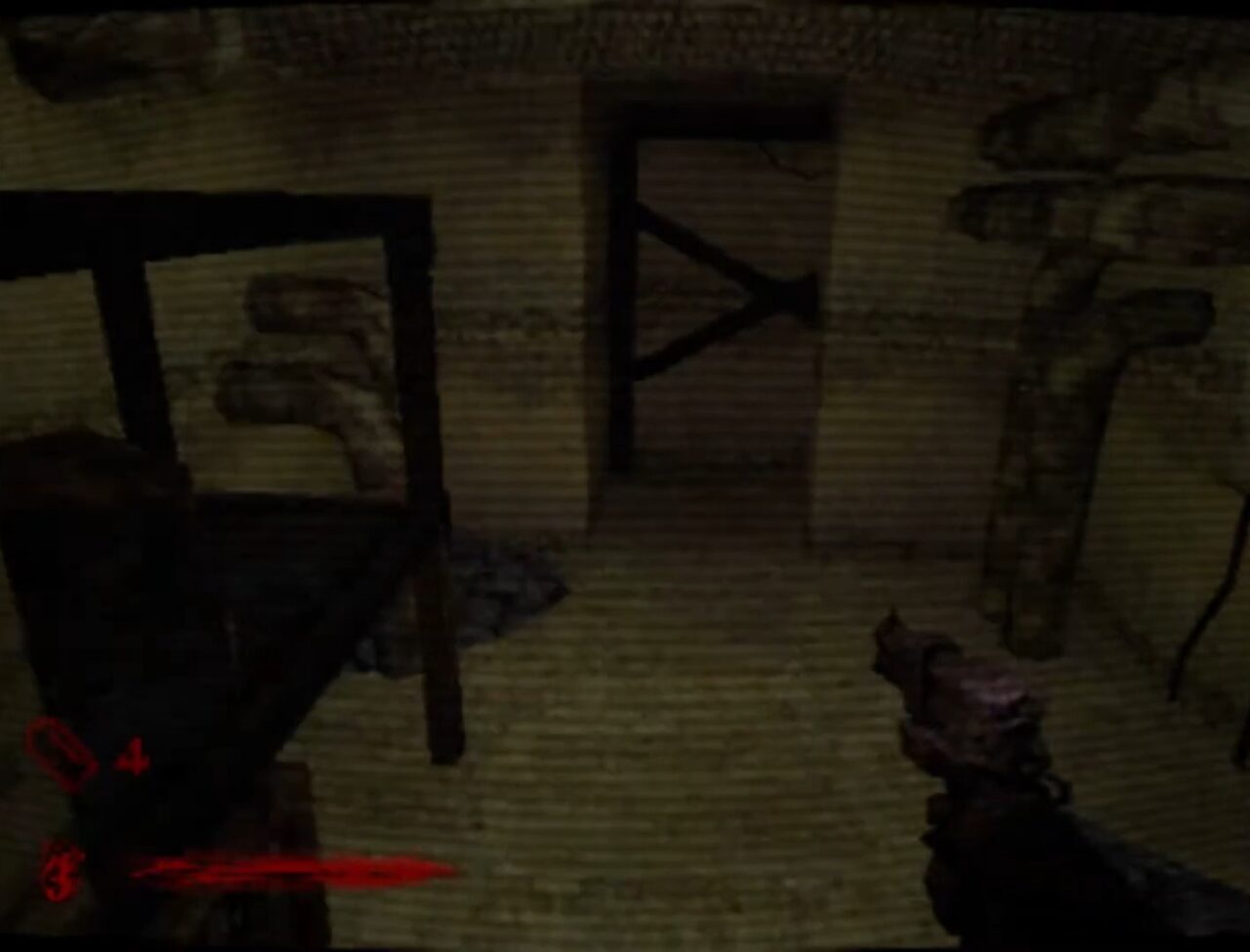
Conceptual Meta-Wank:
Mystery is powerful in horror. Enigma Engine, at least in the brief demo I played, made zero attempt at explaining the situation. Not one audio log or note or even dialogue is to be foundand that amplified the experience to a huge degree. All too often, a horror game feels the need to justify itself. Why do the aliens in Alien exist? How does Umbrella create the zombies in Resident Evil? Obviously I am not against removing all forms of deeper lore from horror games, as they are an incredibly important part of the genre. But I do think there is something to letting the experience exist without explanation. Think of other artistic mediums. A song or a painting. They don’t go into detail, and that’s why the experience is so enthralling.
A good example—and feel free to ridicule me for this one—for this would be the Stands in Jojo’s Bizarre Adventure. Each of these has some kind of power that completely defies reality or even in-world continuity. Crazy Diamond’s power to fix anything, for instance, is impossible to make sense of. Does it reverse time? Does it create new matter out of nothing? Who gives a shit. It’s cool, so let it be cool. The author is smart enough to realize that just gets in the way. We don’t need to know the inner machinations of the Stands, nor the Marker in Dead Space, nor the Otherworld’s existence of Silent Hill, nor the big plastic robots in Power Rangers. They just are.
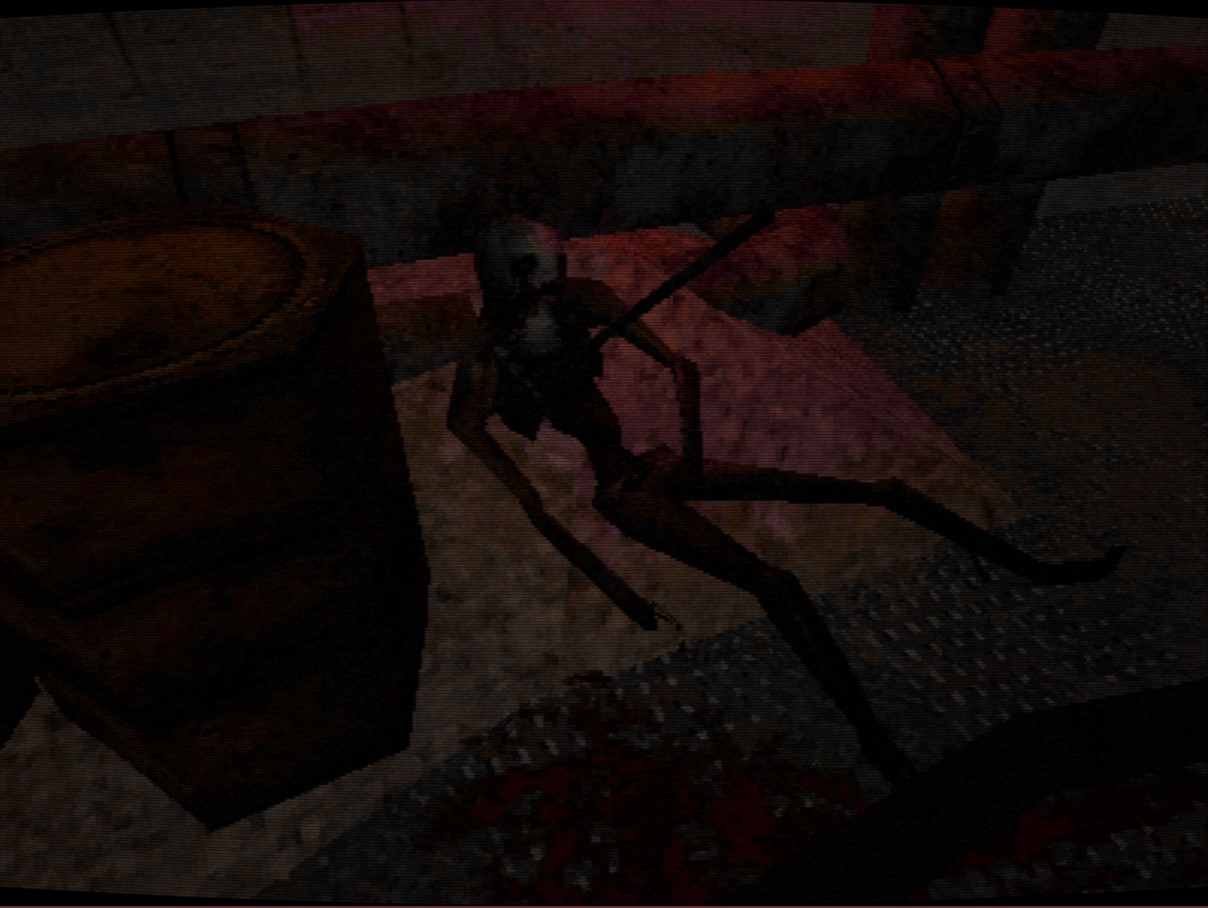
Non-Wanky Game Recap:
Mechanically, Enigma Engine has similar gameplay to many other first-person horror games. You begin feeling incredibly vulnerable as you explore the labyrinthine passage. There’s no run button, there’s no hiding, and there’s no sanity meter (except for the one inside your real-life brain). All you’ve got is a metal pipe and a derringer, the double-barrel pistol a wild west lady of ill repute would have. The controls are simple. Thankfully, the enemies are simple as well. They are these big gangly humanoids with glowing eyes that chase you around. Easily kited, and easily killed, unless they catch you by surprise.
One other thing I really enjoyed about the Enigma Engine demo was the first half, the dark corridor part. Unlike most games of this genre, Enigma Engine’s hallways are extremely narrow. If you encounter an enemy, there is no running past it because it takes up the entire width. This added an extra layer of fear, stripping away yet another expected ability that other games might have: the ability to evade. This was especially frightening when I didn’t realize I had a melee weapon and would waste all my derringer bullets by having poor aim. A small change to the game, but a tremendous effect to the gameplay.
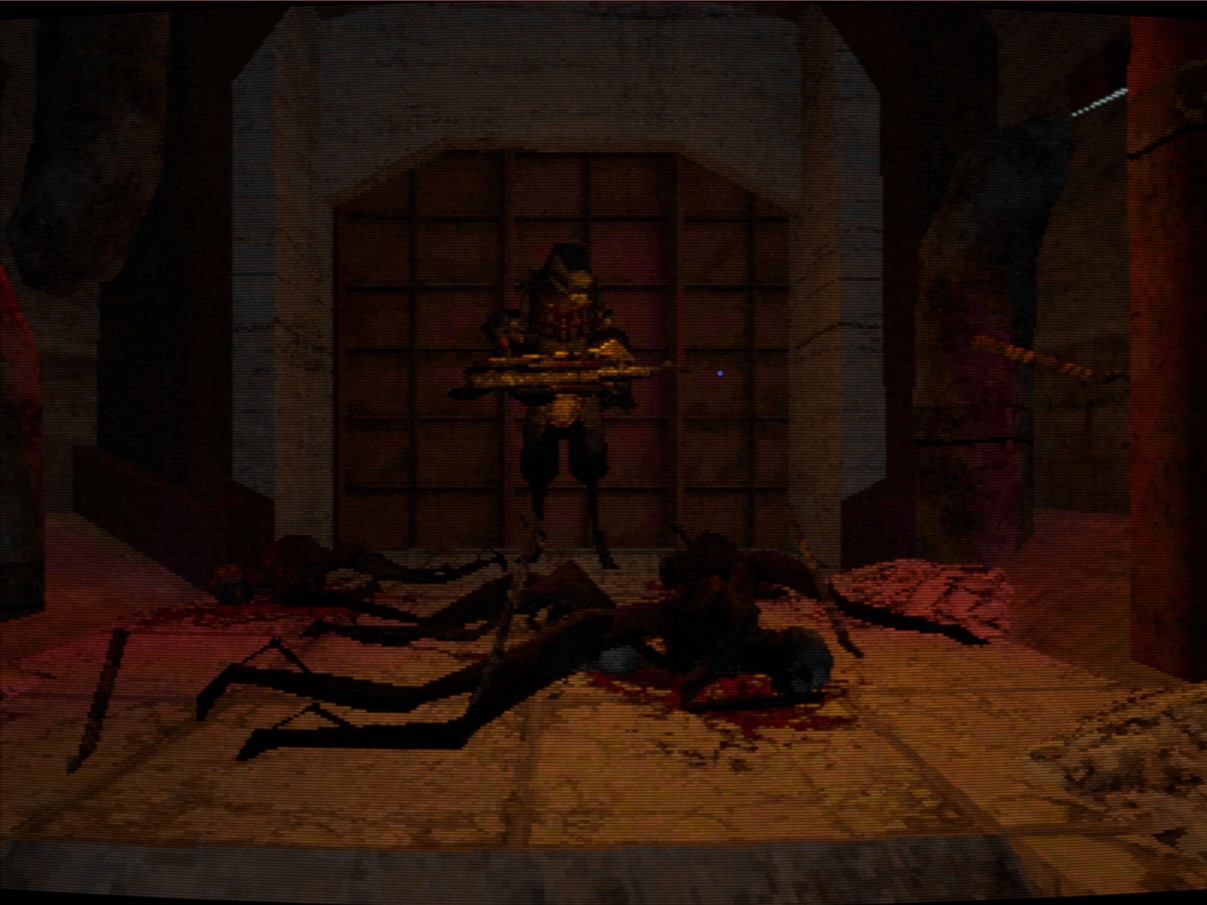
What Works:
What Enigma Engine does so well, and this is certainly not a unique feature in horror games, is tread the line between curiosity and anxiety. Balancing the mystery of the setting you find yourself in alongside the necessity to not focus on thinking about that right now because what if there’s a goblin or something nearby. I do love a game that just throws you right in. No background, no context, just a quick “restart the Enigma Engine” and sends you on your way. That’s the entire premise: you’re in what may be the world’s least well-lit corridor and you’ve got to find something so vague it literally has the word “enigma” in its title. There is a really deep mystery of what this place is, and you don’t even find out what kind of place you’re even in for the first half of the demo. And what you do see, whatever small environmental clues you get, build a much stronger narrative description than simply telling the audience what it is.
Emerging from the first corridors in Enigma Engine to find out we were in a [not spoiling it, just play the damn demo] was an awesome tonal shift, and much stronger than had we been told where we were. Half-Life 2 did this really well. You don’t discover audio logs or diaries strewn about. What you do find are little dioramas. Maybe a camp hidden in a sewer with headcrab guys about, or a dead body in a pool of blood next to some obviously not strong enough healing items. These aren’t as condescending to the audience as say, a note that says “I got shot and the med pack didn’t do nuthin.” And without the reliance on expository notes, when you do get some dialogue it stands out that much more.
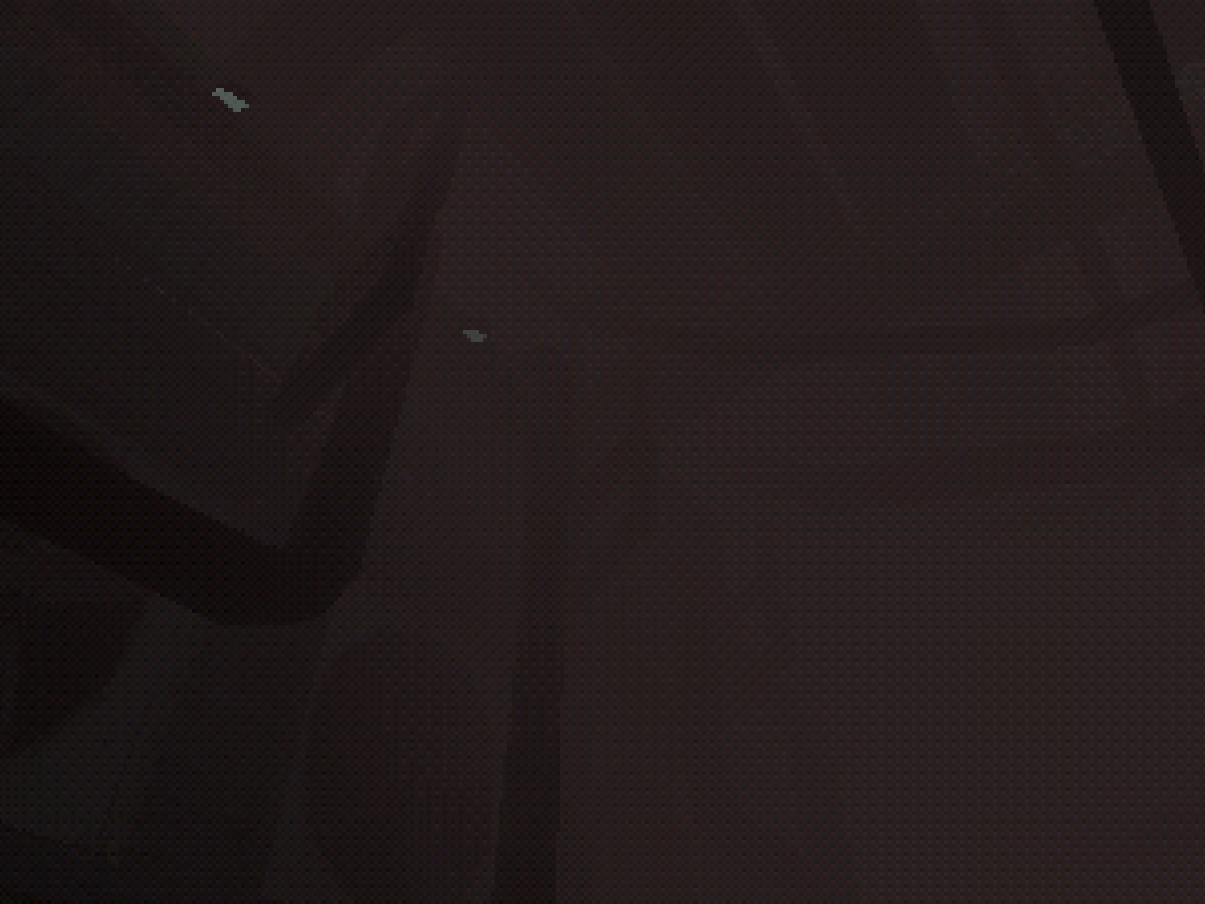
What Doesn’t Work:
This part is certainly going to be a stretch, and it doesn’t even feel right to say what doesn’t work in a game where I’ve only experienced the first ~8 minutes. Enigma Engine is, in its current state, a demo. Incomplete to the extreme. The tiniest sliver of content that will give you a feel for the rest of the game. Obviously, what doesn’t work is that it’s not a game yet. It was made for a game jam. Everything else is moot until we find out what their true vision actually is. Even what I love about it in this state could be wildly different from the game they want to create is. Which is fine because I’m sure what they’ll finish with is going to be just as enthralling!
So here are a few minor suggestions. I suppose the demo could have on a more satisfactory ending. Right now, it ends with a “thank you” popup when you reach the end of a hallway, which is direct but not all too interesting. One other suggestion is to remove the fighting altogether for the initial labyrinthine part of the game. One of the best horror experiences of Enigma Engine for me was using the level layout to evade the monsters, because I didn’t realize they could be killed. Circling back through and leaping into holes to sneak around was a great experience, much stronger than when I found out that you could club them to death.
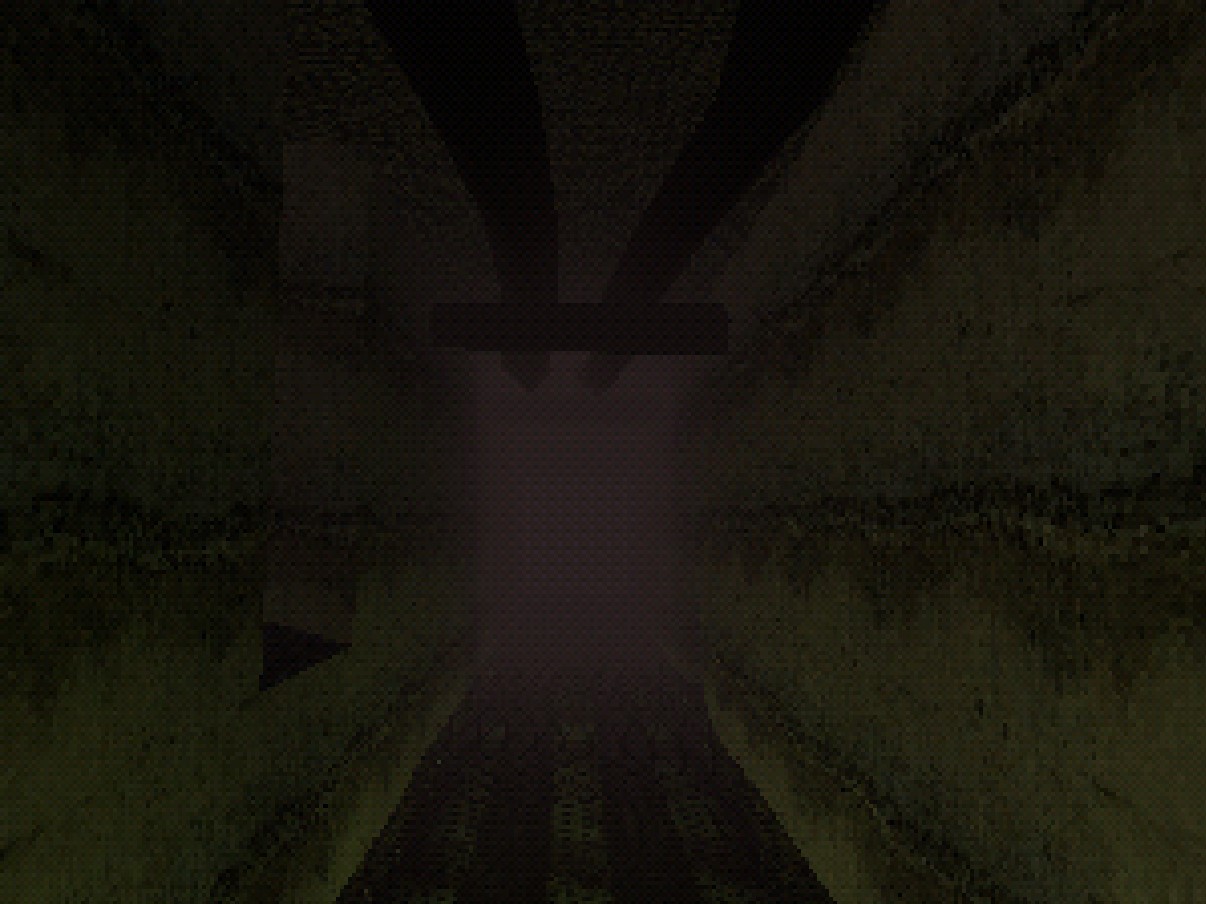
How To Fix It:
Uhh just keep up the good work I guess. Can’t really fix something that isn’t complete. But there are a few things I would like to see in the final game. Stick to visual storytelling. I don’t want to know the details of the enemies or the setting. The Enigma Engine community can theorize and connect the dots if they’re so inclined. I’d also skip a map or anything like that. If the rest of the game is anything like the demo, exploration is key. Finally, keep the player weak. Make the guns just strong enough and the melee swing just fast enough. Vulnerability is important, and I might even suggest that the enemies in the demo should be just a smidgen more viscous and difficult to kill. But of course, these are just suggestions. Take everything I say with a massive grain of salt.
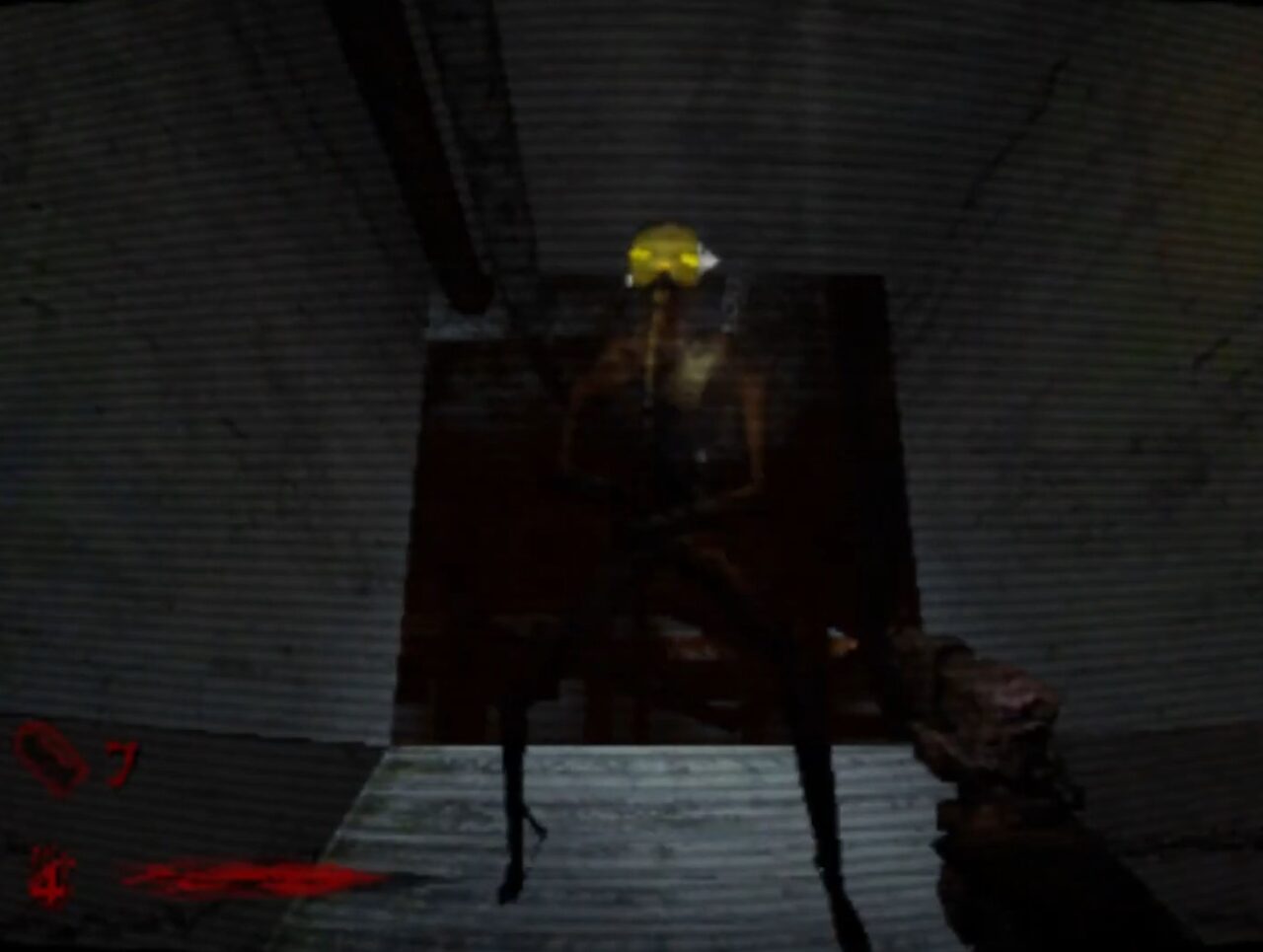
Wanky Musings:
Enigma Engine is neat. Basalt Tower did a great job and I look forward to seeing the final product. Hemingway or someone said that good writing uses as few words as possible to get the point across, and I think on some level that’s true for games as well. I do love a series with deep lore, but at the same time, lore takes you out of the moment. The fear is much less visceral when you are in the safety of reading a note. Every game is different, and every method of creating their experience is perfectly valid. In the case of Enigma Engine, I think less is more.
You can try out the Enigma Engine demo for free on itch.io by clicking here.
Categorized:Editorials Ultra-Indie Spotlight

